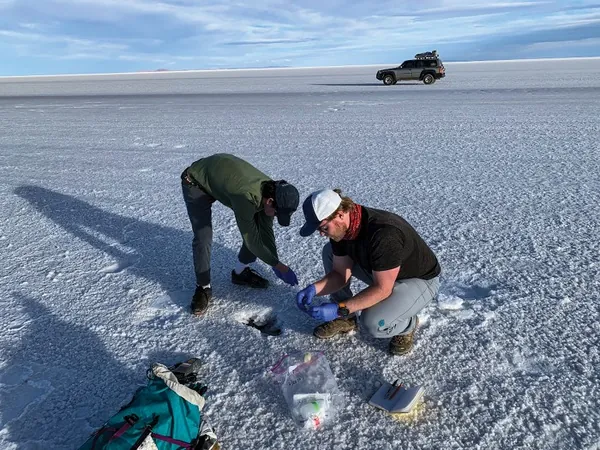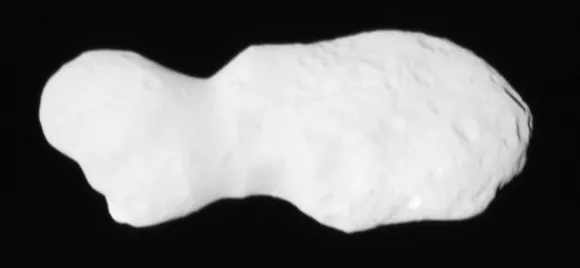
Boron: The Surprising Key to Lithium Brine Chemistry
2025-06-12
Author: Wei Ling
Unlocking the Secrets of Lithium Brines
Did you know that a significant portion of the world’s lithium, essential for lithium-ion batteries, is extracted from South American brines? A fascinating new study reveals that the buffering system in these brines is not primarily dependent on the traditional carbonate methods used by other saline waters, but rather on the presence of boron. This groundbreaking discovery, published in *Science Advances*, could change the way we understand lithium extraction and lessen its environmental impact.
The Enigmatic Salar de Uyuni
The Salar de Uyuni in Bolivia, renowned as the largest known lithium brine source, has long intrigued researchers not just for its size but for its unique chemistry that some liken to that found on other planets. Lead researcher Avner Vengosh from Duke University emphasizes the importance of understanding how these brines manage their pH levels. Unlike other saline waters, which maintain balance through a complex interaction of carbon dioxide and bicarbonate, the brines at Salar de Uyuni owe their stability to boron.
Boron: The Unsung Hero of pH Regulation
Vengosh and his team discovered that in this saline environment, boron not only coexists with lithium but plays a pivotal role in maintaining neutrality in the solution. This shift in understanding opens up new avenues for sustainable mining processes.
Mining Impact and Environmental Concerns
The study also highlights what happens subsequently to these brines post-lithium extraction: the high levels of boron can lead to acidification, a factor that poses significant risks. After lithium is extracted through evaporation processes, the resulting brines can become exceedingly acidic, dropping to a pH of around three. Vengosh warns that such high acidity might lead to serious alterations of geological formations if improperly managed.
A Call for Responsible Practices
Jorge Campanini, an environmental engineer from Bolivia, is apprehensive about current strategies for managing the byproducts of lithium mining. With proposals to reinject these acidic brines back into the earth being considered, there are compelling questions regarding the potential ecological consequences of such actions. The Bolivian government is currently reviewing these strategies, but uncertainties regarding their safety linger.
The Need for Further Study
As highlighted by environmental consultants from the Autonomous University Tomás Frías, the absence of clear management practices for residual waters raises alarms about the future of the region. With a lack of scientific certainty on the hydrogeological impact of altering the brine's pH, there’s a pressing need for more rigorous studies to safeguard this unique ecosystem.
Conclusion: The Path Forward
Understanding the critical role of boron in lithium-rich brines underscores our responsibility to mine sustainably. Vengosh’s lab is dedicated to advancing mining practices that prioritize environmental preservation. With lithium’s demand growing in our transition to renewable energy, ensuring that extraction methods do not jeopardize the integrity of ecosystems like Salar de Uyuni is more vital than ever.




 Brasil (PT)
Brasil (PT)
 Canada (EN)
Canada (EN)
 Chile (ES)
Chile (ES)
 Česko (CS)
Česko (CS)
 대한민국 (KO)
대한민국 (KO)
 España (ES)
España (ES)
 France (FR)
France (FR)
 Hong Kong (EN)
Hong Kong (EN)
 Italia (IT)
Italia (IT)
 日本 (JA)
日本 (JA)
 Magyarország (HU)
Magyarország (HU)
 Norge (NO)
Norge (NO)
 Polska (PL)
Polska (PL)
 Schweiz (DE)
Schweiz (DE)
 Singapore (EN)
Singapore (EN)
 Sverige (SV)
Sverige (SV)
 Suomi (FI)
Suomi (FI)
 Türkiye (TR)
Türkiye (TR)
 الإمارات العربية المتحدة (AR)
الإمارات العربية المتحدة (AR)